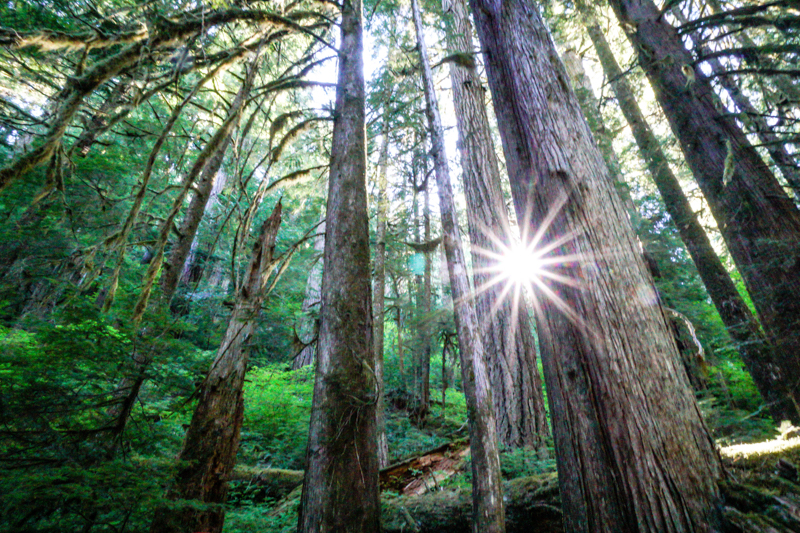In the face of a warming climate, organisms may find at least temporary refuge in cooler nooks and crannies of a landscape. Previous work from the Andrews Forest (Frey et al. 2016 – Science Advances) found that sites with concave microtopography and with old-growth forest structure tended to be cooler than other locations across the landscape. But how consistent is this effect? If plants, animals, fungi etc. are to find refuge in hot years, it is critical that such sites are consistent over time (otherwise biodiversity would need to move around the landscape to track refugia). This is where long-term undercanopy data from the Andrews Forest come in. Chris Wolf (a postdoc with Matt Betts’s group at OSU) and colleagues analyzed 10 years of microclimate data from 184 sites across the Andrews Forest to test whether there is temporal consistency in thermal refugia. Three important findings emerged. First, cool and hot sites were remarkably consistent and predictable across the 10-year study. This is good news for organisms that aren’t likely to pick and move to track microclimates (e.g., lungless salamanders, herbaceous plants, tree seedlings, mosses, lichens). Second, old-growth forests played an important role in this refugia effect (on the order of 3-5 degrees C cooler in summer months). Finally (and this is the less good news), free-air temperature (i.e., how warm it is in the region) overwhelmed the capacity of local sites to stay cool. That is, even though the coldest sites across the Andrews Forest are consistently so, even these sites warm up considerably in hot years. Overall, these findings have important implications for policy and management; to maintain microrefugia in a rapidly changing climate, conservation of old-growth and other structurally complex forest habitat is critical, especially at sites with high elevation relative to their surroundings.
Wolf, Christopher; Bell, David M.; Kim, Hankyu; Nelson, Michael Paul; Schulze, Mark; Betts, Matthew G. 2021. Temporal consistency of undercanopy thermal refugia in old-growth forest. Agricultural and Forest Meteorology. 307: 108520. doi:https://doi.org/10.1016/j.agrformet.2021.108520

